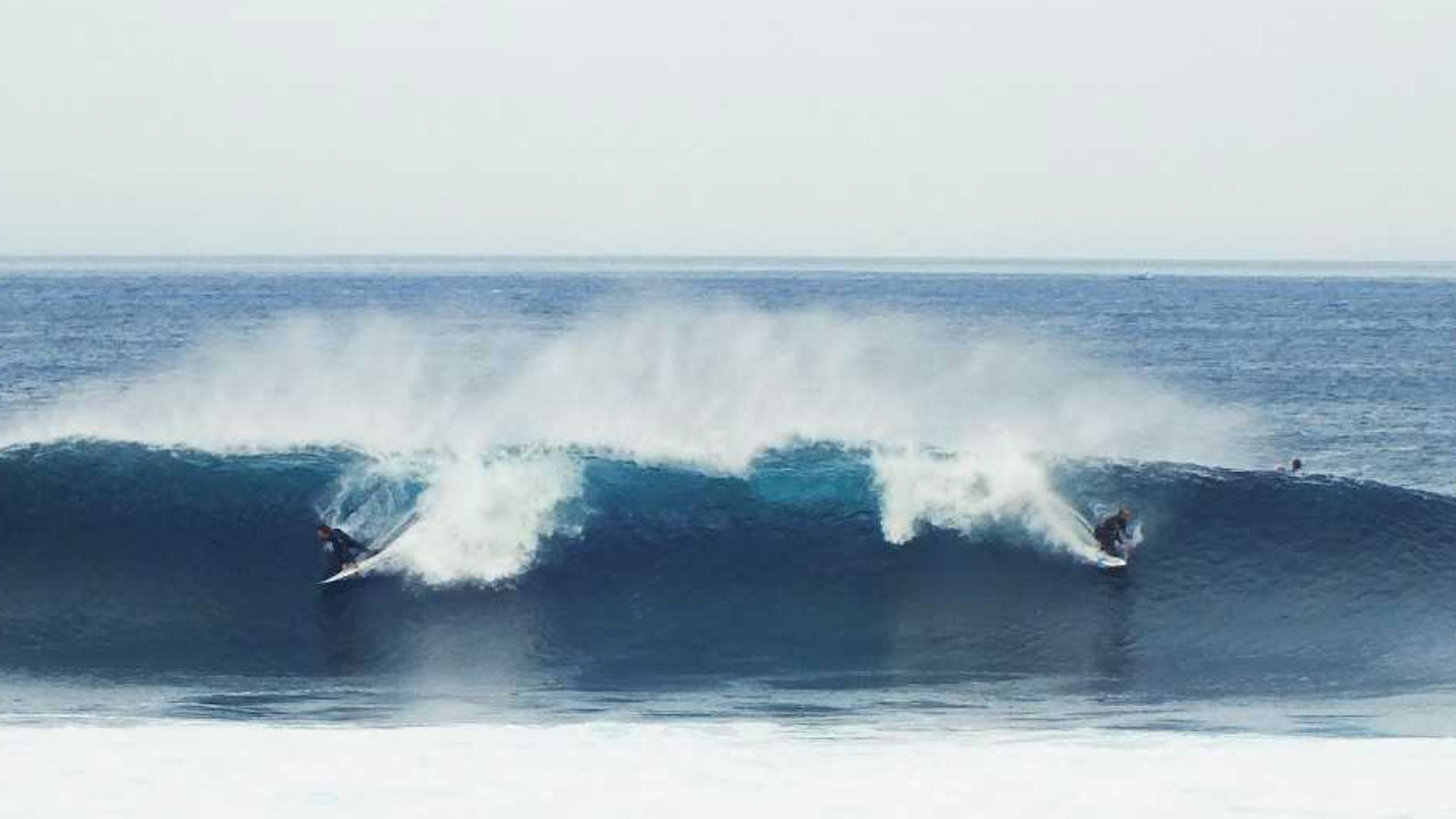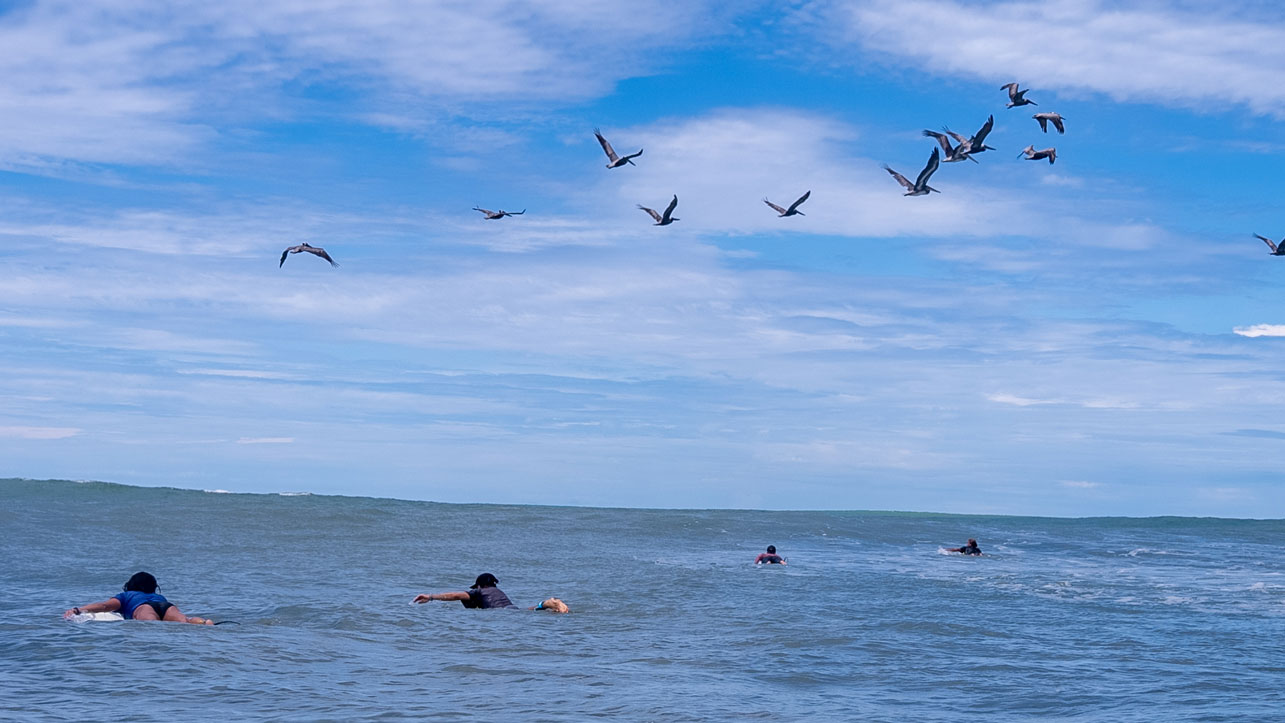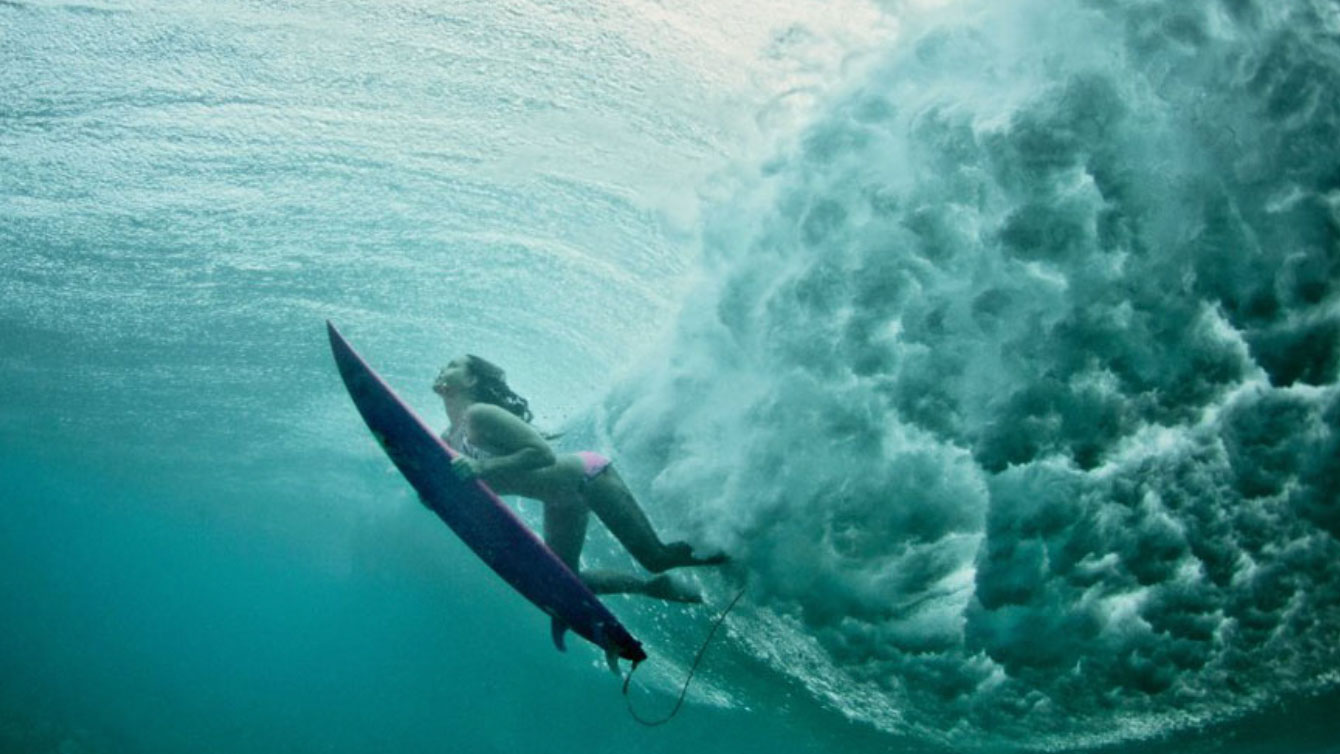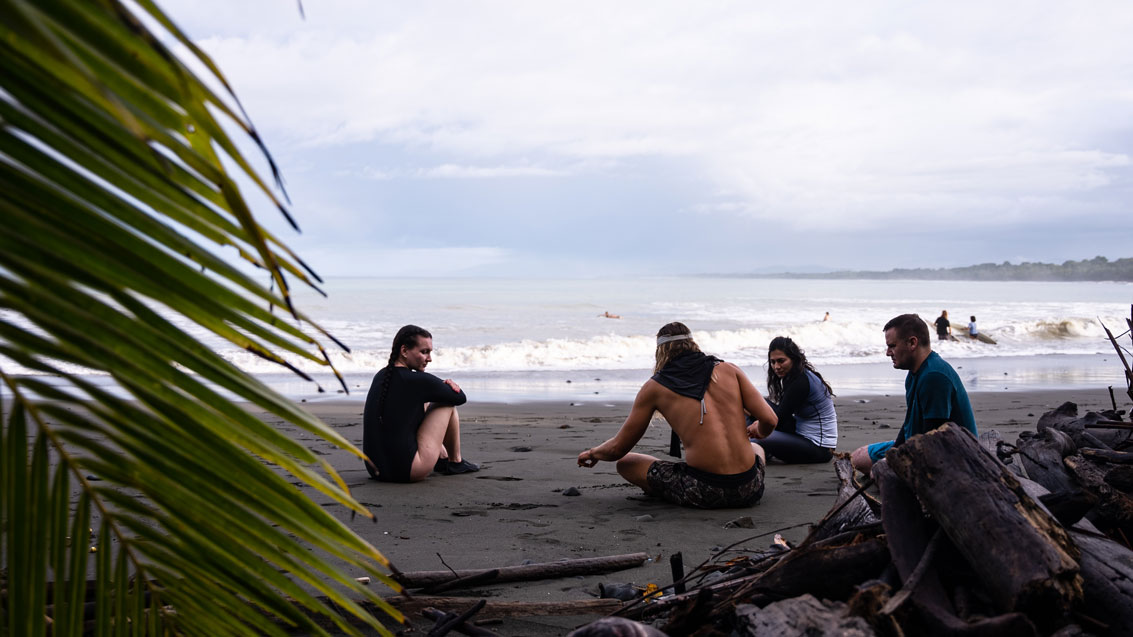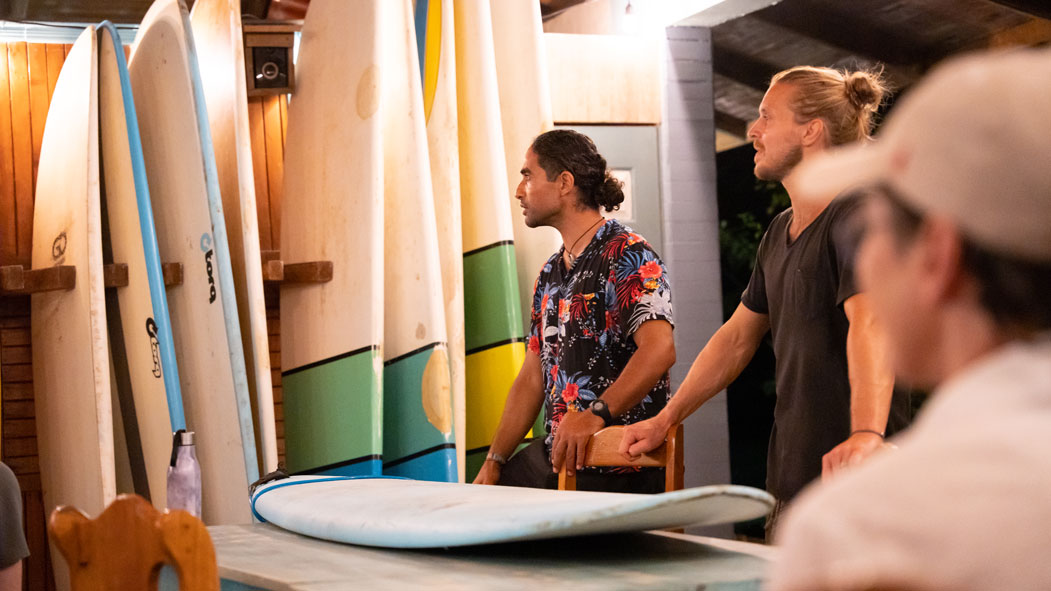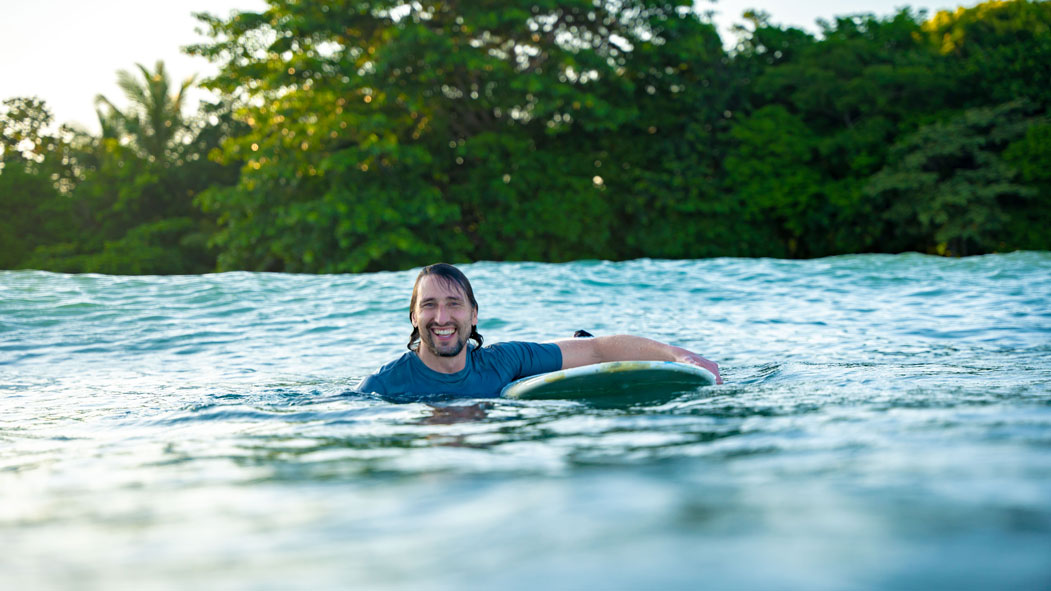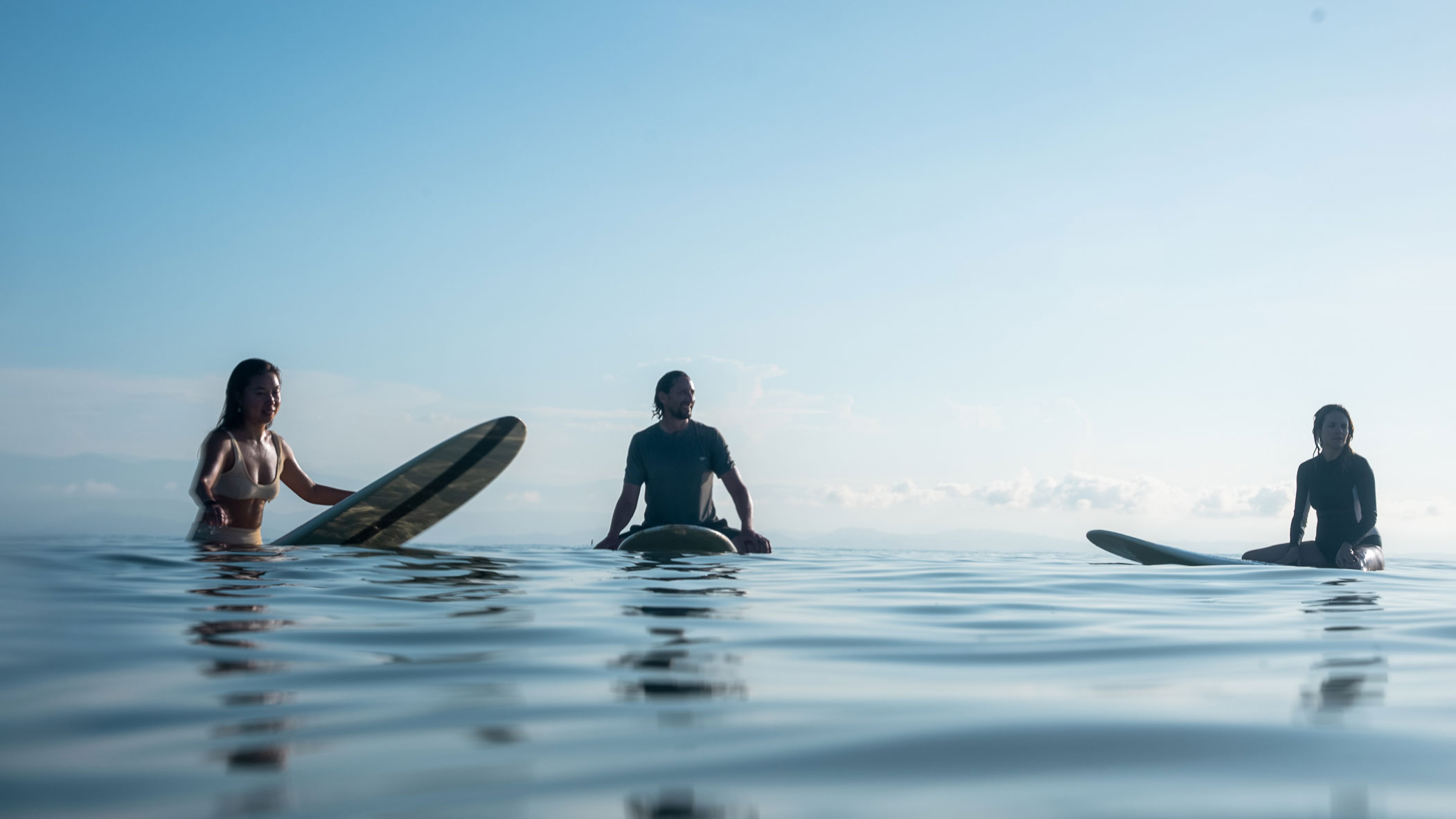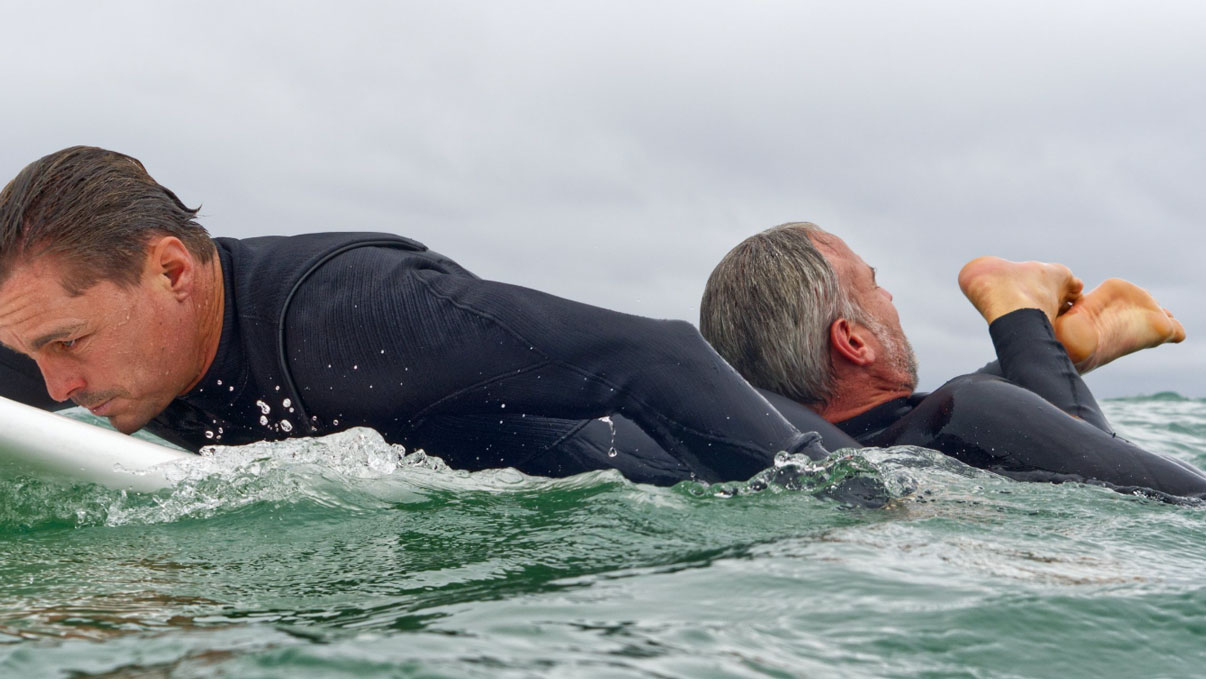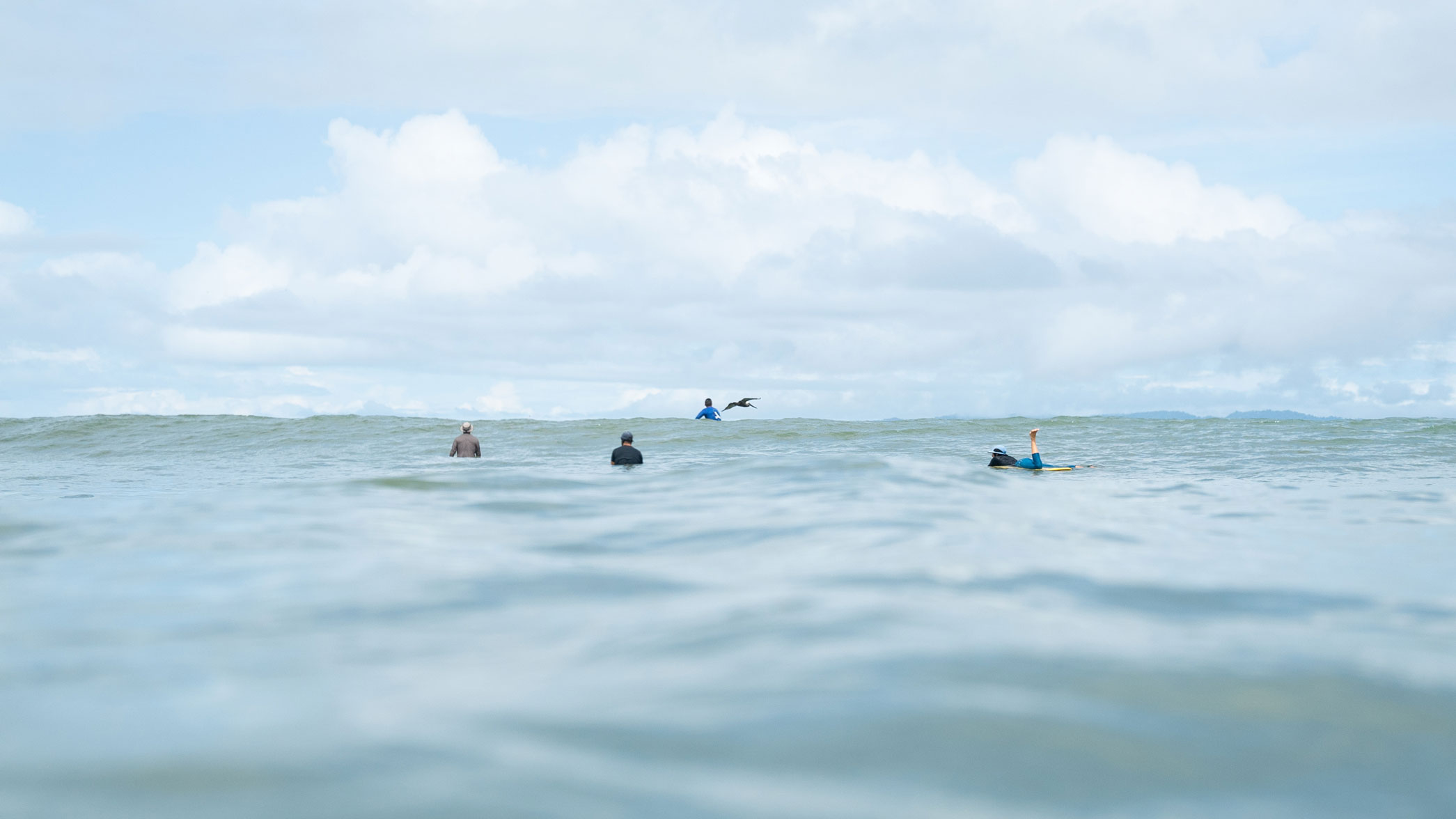
26 Oct Surf Etiquette and Safety: A Must-Have Handbook
Are you a new surfer or someone who simply loves the ocean? If so, you’re about to embark on a thrilling journey that will bring you closer to nature and help you develop a deeper appreciation for the sport.
Before you head to the waves, it’s vital to have a solid foundation in surfing etiquette, safety, and surf environment knowledge. This article is your must-have handbook, guiding you through the unwritten rules of the sport, essential paddling techniques, and tips for navigating different surf spots and conditions, all while protecting our precious oceans.
Not only will this handbook empower you with the knowledge to become a better surfer, but it will also play a role in fostering a positive surfing culture and ensuring the sustainability of our oceans for generations to come. So, let’s dive into the world of surf etiquette and safety, and begin our journey to becoming responsible and skilled surfers.
Key Takeaways
- Master surfing etiquette to ensure a safe and enjoyable experience for all.
- Respect the right of way, apologize if you drop in and signal your intentions.
- Adopt principles of Leave No Trace, understand ocean conditions and develop an emergency plan for safety.
Mastering the Basics of Surf Etiquette
Paddling Techniques for Safety
Choosing the Right Surf Spot and Gear
Communication and Conflict Resolution in the Water
Environmental Stewardship and Beach Respect
Surf Safety Tips and Emergency Preparedness
Mastering the Basics of Surf Etiquette
Contributing to a harmonious atmosphere in the lineup comes from understanding the right of way, refraining from dropping in on others, and respecting fellow surfers.
Right of Way
The right of way is determined by the surfer closest to the peak of the wave, ensuring the orderly flow of traffic in the lineup. Respecting the right of way is indispensable to prevent collisions and animosity among surfers.
If you’re new to the right of way rule, consider deferring to more experienced surfers further down the line until you’ve gained more experience. Always be conscious of your positioning in regard to other surfers riding the waves and take appropriate action to facilitate the surfer in a superior position.
Following the right of way rule contributes to everyone’s safer and more enjoyable surfing experience.
Don’t Drop In
Dropping in on another surfer is a major breach of surfing etiquette and can be both dangerous and disruptive. Always take a moment to look both ways and over your shoulder to see if there is a surfer riding the wave already before taking a wave to ensure no one else has the right of way, especially when other surfers are paddling for the same wave as you.
If you inadvertently drop in on someone, offer a courteous acknowledgement and exit the wave as swiftly as possible, followed by an apology upon returning to the lineup. Avoiding drop-ins maintains order in the lineup and shows respect for your fellow surfers.
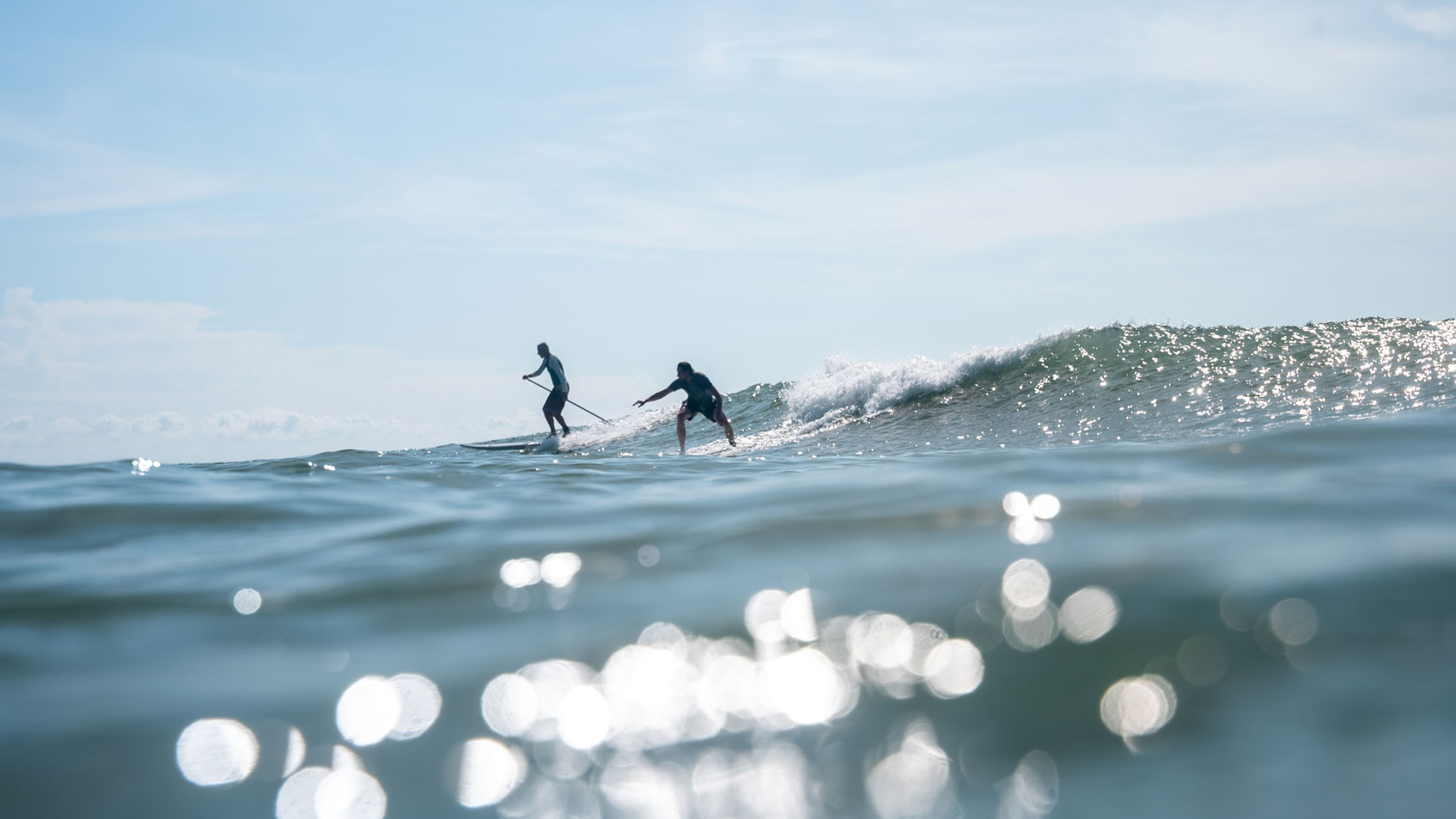 Respect Your Fellow Surfers
Respect Your Fellow Surfers
Treating fellow surfers with respect is key to fostering a positive surfing environment. Regardless of skill level or local status, show courtesy and adhere to the surfing etiquette to avoid tension and disputes with your fellow surfer, allowing everyone to enjoy their time in the water.
Paddling Techniques for Safety
Safe navigation of the lineup is key to avoiding accidents and ensuring a pleasant surfing experience. Mastering paddling techniques like the duck dive, turtle roll, and board control better equips you to move through the line up without collisions or disruptions.
Moreover, understanding how to paddle around other surfers and maintaining a safe distance from breaking waves can help you prevent dangerous situations and keep a positive atmosphere in the water while riding waves.
Paddling back to the Lineup
Carefully paddling back to the lineup is essential for preventing interference with other surfers and maintaining a safe distance from breaking waves. Be mindful of your position relative to other surfers and avoid paddling in their surfing trajectory.
If it seems like someone is surfing towards you as you are paddling back and that you might be in their line, head for the whitewash and turtle roll or duck dive to leave them the open face of the wave to surf it the way they choose to.
Otherwise, paddling wide and staying aware of your surroundings helps ensure a safer and more enjoyable experience for everyone in the water.
Duck Dive and Turtle Roll
Mastering the duck dive or turtle roll techniques is crucial for safely navigating under breaking waves while maintaining control of your board. The duck dive involves pushing your surfboard down to dive below a wave, while the turtle roll requires rolling the board around and staying underwater while the wave passes by the board below the surface.
These techniques enable you to move through the lineup without disrupting other surfers or putting yourself at risk.
Board Control
Maintaining control of your board is paramount for preventing accidents and collisions with other surfers, particularly in congested line ups.
Avoid ditching or throwing your board away when paddling out, as this can lead to accidents and injuries. You should be comfortable with either turtle rolls or duck dives before paddling into a crowded area.
If you ditch your board because you get scared of a bigger wave, you face 2 risks: First, your leash could break and you could find yourself without a board, which could lead to panicking and getting short of breath. Second, by letting your board go, it can hit someone who is paddling behind you.
Practicing board control contributes to a safer surfing environment for everyone in the water and is a required minimum skill when getting to surf in spots where there are other people around you. This is why we usually teach how to turtle roll on the first class of our surf coaching retreats.
Choosing the Right Surf Spot and Gear
Selecting the right surf spot and gear is crucial for ensuring a safe and enjoyable surfing experience. Here are some steps to follow:
- Assess your skill level.
- Choose the appropriate equipment.
- Familiarize yourself with the conditions at various breaks to avoid putting yourself or others at risk.
Making informed decisions about where and when to surf contributes to a safer and more enjoyable environment for all water users.
Surf Spot Selection
Choose a surf spot that matches your skill level to ensure a safe and enjoyable experience for both you and other surfers. Beginner surfers should avoid surfing alone, and should look for established surf spots with mellow small to midsize waves for safe practice. Learn to identify rip currents and how to get out of one.
If you look at the waves and aren’t sure if you could paddle back to the beach if you were to lose your board, then find a more suitable surf spot for your swimming skills and surf experience.
Gear Recommendations
Selecting the appropriate gear, such as surfboards and wetsuits, is essential for a safe and enjoyable surfing experience. Choose a soft top board if you’re new to surfing, as this type of board offers more protection and is more forgiving for beginners. Opt for a board with more length and volume to help you catch more waves.
Wear a wetsuit that is suitable for the water temperature and conditions to ensure comfort and protection from the elements. Don’t forget the importance of fins and surf wax, which provide balance and prevent your feet from slipping off the board.
Communication and Conflict Resolution in the Water
Effective communication and conflict resolution are vital for maintaining a positive atmosphere in the water. Showing your intentions, apologizing for any mistakes, and building positive relationships with locals and other surfers contribute to a harmonious environment that benefits all surfers.
Remember, good communication is key to avoiding accidents and misunderstandings, as well as fostering a sense of camaraderie among those who share the same wave.
Signaling Intentions
Clearly signal your intentions when you catch waves, including green waves, to avoid confusion and potential collisions with other surfers. Use sound signals, hand signals, or verbal cues to communicate your location or planned actions to other water users.
If you are in priority and there is a wave coming but you’re slightly out of position, let the other surfers around know that you’re not going to take this wave and you’ll be going for the next one. By offering them to take the wave, you’ll be less likely to get dropped on the next wave when you paddle for it and you won’t have wasted a wave that someone else could’ve taken but that nobody went for because they assumed you would go.
Finally, if you’re in position and a set is coming but you want to take the 2nd or 3rd wave of the set, raise your arms in the air to signal to other that you’re not going for the first upcoming wave.
If roles are reversed, you can ask the next surfer “Hey are you going on this one?” then you’ll know if he is going or waiting for a bigger one behind.
Don’t be greedy
If you just caught a nice long wave, don’t paddle back to the peak right away and catch another one. Wait for a few sets to pass so that others can catch a wave, and move up the line up gradually.
It’s seen disrespectful to other surfer to bypass them in the lineup by paddling around them to reach the peak and priority.
Always provide ample room and be cognizant of other surfers’ movements, being prepared to take evasive action if required. Make sure you’re not in front of a surfer who is paddling and about to drop into a wave.
Apologizing and Learning from Mistakes
Apologize and learn from any mistakes made in the water to reduce tension and maintain a positive atmosphere. Offer a genuine apology, assume responsibility for your actions, and suggest a solution if possible.
Reflect on the situation, understand the cause, and take measures to ensure the mistake does not occur again.
Building Positive Relationships with Locals
Foster positive relationships with local surfers by:
- Showing respect
- Following surf ethics
- Engaging in friendly conversation
- Introducing yourself
- Inquiring about the local area and surf conditions
- Demonstrating genuine interest in their experiences.
By building positive relationships with locals, you’ll contribute to a supportive surfing community and enhance your own experience in the water.
In many spots around the world, it is expected from some local surfers to have first pick on any waves even if they arrived after you in the line up or if it was your turn to go, so be prepared to give away some good waves even when you feel it was your turn.
Environmental Stewardship and Beach Respect
As surfers, we have a responsibility to protect our oceans and beaches for future generations. Practicing environmental stewardship and beach respect involves adhering to leave no trace principles, protecting wildlife and ecosystems, and supporting sustainable surf tourism.
Taking these steps not only contributes to the preservation of our precious natural resources but also sets a positive example for others to follow.
Leave No Trace
Pick up trash and leave the beach cleaner than you found it to preserve the natural beauty of the environment. Practicing Leave No Trace principles minimizes your impact on the environment and helps maintain the pristine condition of our beaches for future generations to enjoy.
Encourage others to do the same and create a ripple effect of positive change.
Protecting Wildlife and Ecosystems
Be mindful of wildlife and ecosystems, avoiding actions that may harm marine life or damage sensitive habitats. Reduce your environmental footprint by minimizing the use of plastics and other pollutants, and support conservation efforts and local organizations that focus on protecting wildlife and ecosystems.
Taking these steps contributes to the conservation of our oceans and their inhabitants.
Supporting Sustainable Surf Tourism
Get involved in beach cleanups and conservation efforts to protect our oceans and promote a sustainable surfing culture.
Surf Safety Tips and Emergency Preparedness
Surfing safety and emergency preparedness are essential for all surfers, regardless of skill level. Understanding ocean conditions, learning basic first aid and rescue techniques, and creating an emergency plan better equips you to handle any unexpected situations that may arise in the water.
Remember, being prepared and knowledgeable about etiquette and safety can make all the difference in the event of an accident or dangerous situation.
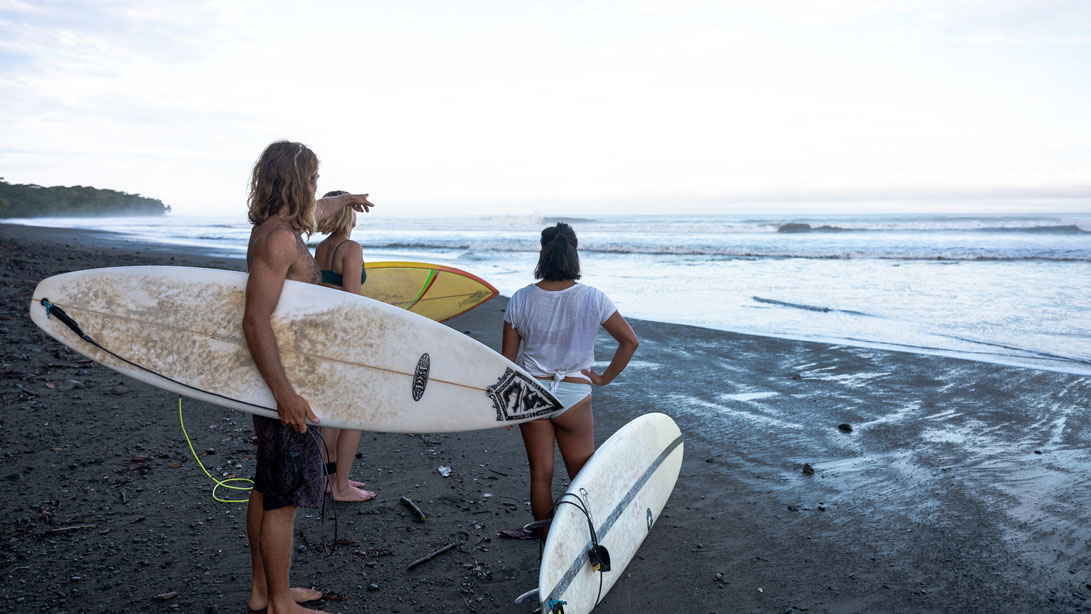 Understanding Ocean Conditions
Understanding Ocean Conditions
Familiarize yourself with ocean conditions, such as rip currents and tides, to make informed decisions about when and where to surf. Check forecasts and consider factors like swell heights, wind patterns, weather forecast (thunderstorms), sunset time and water temperature before heading out to the beach.
Beach breaks are most prominent to have rip currents, which you should be able to spot by looking where there is no white wash, a more murky colour of water or small ondulation on the water showing there is a current under water.
Pointbreaks and reef breaks can show rocks close to the take off zone so going at low tide to inspect the area is always a good idea.
Understanding ocean conditions better equips you to handle any challenges that may arise during your surf sessions and ensures a safe and enjoyable surfing experience.
First Aid and Rescue Techniques
Learn basic first aid and rescue techniques, such as CPR, controlling bleeding, and treating burns, to assist fellow surfers in case of an emergency or injury. Having this knowledge can make a significant difference in the outcome of a life-threatening situation and demonstrates your commitment to the well-being of others in the water.
Equip yourself with these skills and be prepared to help when needed.
Look at one of the techniques captured in the picture below, demonstrating how to assist a surfer in getting out of the water.
Prevention
Using good quality sun block, a surf hat and a long sleeve rash guard when surfing in tropical countries between 9am-4pm can prevent most common sun sickness while surfing.
Bringing iced water with you to drink every now and then during your session will help you prevent sun-stroke and de-hydratation, which are the most common issues when surfing in Costa Rica or other tropical countries.
Summary
In conclusion, the key to a safe and enjoyable surfing experience lies in mastering generally accepted surfing etiquette, practicing safety measures, and being an environmentally responsible surfer. By respecting the right of way, maintaining board control, understanding ocean conditions, and building positive relationships with other surfers, you’ll contribute to a harmonious surfing environment that benefits all water users.
With this must-have handbook, you’re now equipped with the knowledge and skills needed to become a responsible and knowledgeable surfer. Remember, the journey to becoming a better surfer starts with a single wave – so paddle out, catch a ride, and make a splash!
Frequently Asked Questions
What is proper surf etiquette?
The golden rule is to observe right of way; the surfer furthest out, closest to the peak should have priority for the wave. Communication between surfers is also important – calls like “Going left!” or “Going right!” should be respected if the wave is dual-peaking.
What should you not do while surfing?
Avoid paddling behind other surfers, letting go of your board, paddling over the shoulder of a wave when another surfer is about to ride, paddling through the lineup, and jockeying for position in the lineup- to ensure a safe and enjoyable surfing experience.
How can I avoid dropping in on other surfers?
To avoid dropping in on other surfers, take a moment to look both ways and over your shoulder before taking a wave to check if anyone else has the right of way.
If you’re engaged and paddling to drop the wave but see someone coming or paddling for the wave in priority and you judge that the probabilities that he will be able to drop the wave and make it are high enough, then you should grab your rail and pull the board back to disengage from the slope of the wave and not take that wave.

